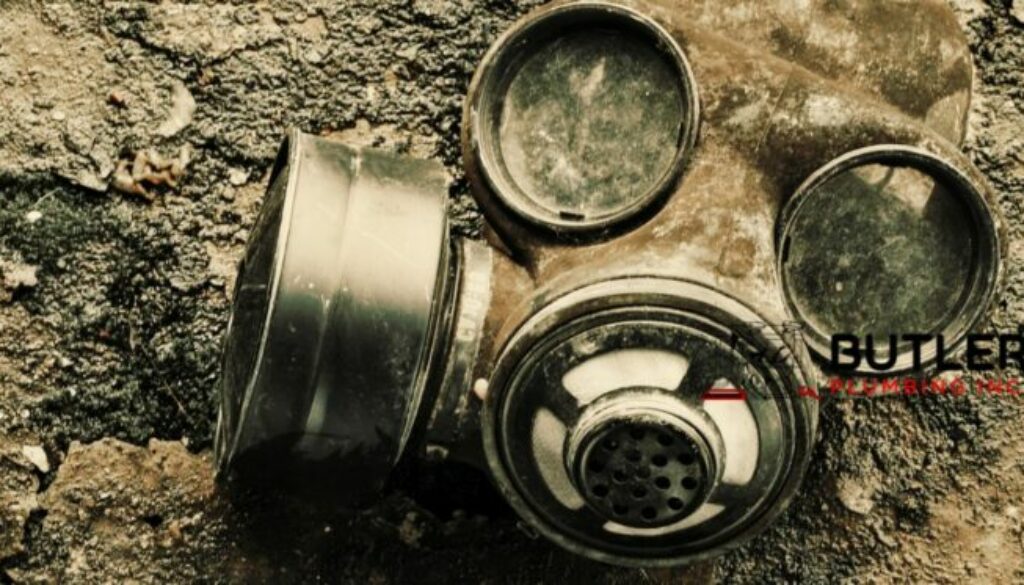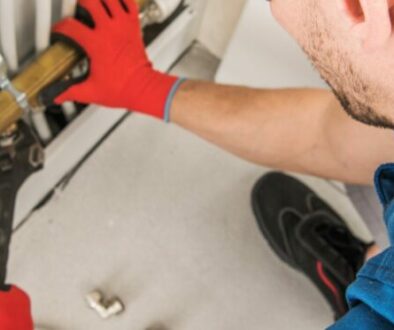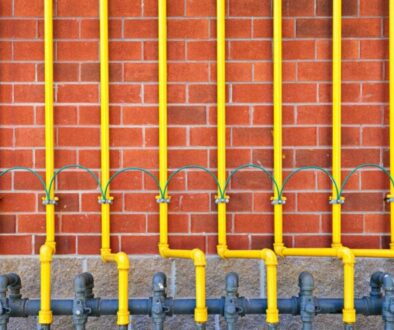How Deep Are Gas Lines Buried In Oklahoma?
Have you ever wondered how deep gas lines are buried in Oklahoma? Chances are, the answer is deeper than you think. According to recent estimates, many of these pipes are buried an average of three feet underground! That’s right – not only do they provide a necessary service, but they’re also hidden away from view and out of harm’s way.
For plumbers like me who work with gas lines every day, this depth is important for safety reasons. Not only does it prevent accidental damage or tampering, but it also ensures that any potential problems can be quickly identified and solved without risk to the public. But what else do we need to know about Oklahoma’s gas line burial practices? Read on to learn more about why the depths vary and some interesting facts about how far below ground our natural gas pipelines run.
If you’re looking to increase the value of your home, plumbing upgrades are a great place to start! Not only can they make your home more comfortable and functional, but they can also add significant value when it comes time to sell. And when it comes to plumbing upgrades, few things are as important as making sure your gas lines are safe and secure. After all, a leak or other issue could lead to serious damages and liability concerns. So, it’s crucial to understand the depth and placement of these utilities. Luckily, I’m here to help you navigate the world of plumbing upgrades and ensure your home is safe and valuable.
Do Gas Lines Need To Be Buried?
Do gas lines need to be buried? Absolutely! Utility companies must take great caution when it comes to underground gas lines. Not only is the depth of these gas lines important, but also their placement in relation to other utility lines and property boundaries. Gas lines should always be installed with safety being a top priority. If they’re not buried deep enough or if there’s any risk of them getting damaged, then it could prove harmful for everyone involved.
Gas line installation requires knowledge and experience because proper care has to be taken into account before work begins. It’s essential that all rules and regulations are followed by those installing the pipe so that no accidents occur due to faulty installation or misjudged depths. The wrong choice may have serious consequences – leading to potential damage to properties or worst-case scenarios like an explosion or fire hazard. That’s why awareness of how to properly install a gas line is vital for anyone handling such projects.
It’s important for homeowners and contractors alike to understand the complexity of installing a safe and effective gas line system at the right depth below ground level. Knowing what kind of soil lies beneath as well as its composition can help inform decisions about how deep each individual pipe needs to go in order for it to remain protected from any external risks that might arise over time. With this information, people can make informed choices about where the safest place will be for their chosen pipeline route and how far down it should be placed in order for optimal protection along its entire length.
How Do People Choose The Depth For A Gas Line?
When it comes to gas lines, the depth at which they must be buried depends on where they are located. In Oklahoma, natural gas lines need to be buried a minimum of 18 inches deep, while water lines should typically be placed 30-36 inches deep. Both types of lines should have an additional 12 inches of cover material above them for extra protection.
The primary factor that determines the depth of a gas line is soil stability and foundation height. There needs to be enough space between the top of the pipe and any structures or hardscape elements such as sidewalks or driveways in order to prevent damage from freezing temperatures or vehicles driving over them. Additionally, when installing new pipes, it’s important to consider potential future changes in landscaping plans so that all necessary piping can still fit within their designated depths.
Choosing the right depth for a gas line requires both knowledge and experience. Working with an experienced plumber will ensure that your pipes are safely installed at optimal depths and with careful attention paid to avoiding potential hazards along the way.
How Do You Find Out Where You Can Dig?
It can be a challenge to know where you can dig without doing damage, so it’s important to take the proper precautions before starting any project. With gas lines specifically, there are underground utilities that could be damaged if not properly identified before excavation begins. These utility lines belong either to public service providers or private companies, and they typically include both main pipes and service lines for individual customers.
In Oklahoma, private lines must always be located with the help of the company that owns them through its central call center. For public services like natural gas pipelines and water mains though, homeowners can access records online detailing exactly what is buried on their property. Knowing this information ahead of time will ensure your safety as well as the protection of local infrastructure from reckless digging.
Knowing how to locate these utilities helps avoid costly mistakes in addition to protecting yourself and others from harm due to hazardous materials such as leaking methane or other potentially dangerous incidents caused by human error. Taking into account all of these factors when planning out an excavation job allows everyone involved peace of mind while ensuring all necessary regulations are met along the way.
How To Bury Gas Line
Burying gas lines is no easy task, but it’s important to do right. In Oklahoma, gas lines should be buried at least 18 inches deep for safety and protection from potential damage. If you’re burying a line near a driveway or other paved area, make sure the depth increases substantially. You don’t want your hard work to go to waste because of an accident!
When digging, keep in mind that water supply lines are often much deeper than gas lines. It’s critical that they remain undisturbed as even minor damage can cause serious complications. Make sure to use caution when excavating around these areas; there may be utility markings indicating their location so follow them closely.
The most effective way to ensure proper burial of the gas line is to call on professionals who have experience with this type of project. These experts will know exactly how deep and wide the line needs to be installed based on local regulations, and they’ll also take into account any nearby infrastructure that could interfere with its installation process. When everything is safely taken care of by experienced hands, you won’t need to worry about any unexpected surprises down the road – like costly damages due to improper installation jobs.
That said if you decide not to hire help for this job then make sure you read up on all necessary guidelines before starting. Most importantly: never underestimate the importance of burying gas lines correctly and deeply enough! With the right knowledge and preparation, you can avoid costly repairs due to future damage caused by improperly-buried pipes or other problems associated with shallow depths. Transition sentence: Homeowners must understand what their roles and responsibilities are in order for the safe and successful installation of gas lines…
What Are The Homeowner’s Roles & Responsibilities?
As a homeowner, you have an important role to play when it comes to gas lines in Oklahoma. It’s essential that you understand the different types of utility lines and pipes used for natural gas distribution. This knowledge can ensure your safety, as well as the public utilities in your area.
Gas lines are typically buried underground at depths ranging from at least 18-36 inches deep. Depending on soil conditions, local regulations may require deeper trenches for installation or repair work. While some homeowners attempt DIY repairs and installations, it’s best to contact a licensed plumber familiar with these protocols so they can be done correctly and safely.
Public utility companies also use their own guidelines when installing new pipelines and conducting maintenance services. That’s why it’s critical to stay up-to-date on any notices or alerts provided by those companies regarding pipeline locations near your property line and potential hazards associated with them. By taking ownership of this responsibility, you’ll help protect yourself, your family, and everyone else living around you from potentially dangerous situations involving natural gas leaks or gas explosions caused by improper handling of piping systems.
Conclusion
It’s important to keep your gas lines in good condition and properly buried. I’m a plumber, so I know the importance of safety when it comes to these types of projects. It’s essential that homeowners take all the necessary precautions before digging or planting near their gas lines.
On average, gas lines are typically buried four feet deep in Oklahoma. This is to ensure they remain protected from extreme weather conditions and unexpected accidents. Of course, this may vary depending on what type of soil you have and where exactly you’re located within the state.
As a homeowner, it’s important to remember that while burying a gas line yourself may seem like an easy task – it’s best left up to professionals who understand how deep each line should be placed for optimal safety measures. If done incorrectly, there can be serious consequences – including potential explosions due to leakage! So please always call a professional if you need help with any kind of gas-related work at home.





